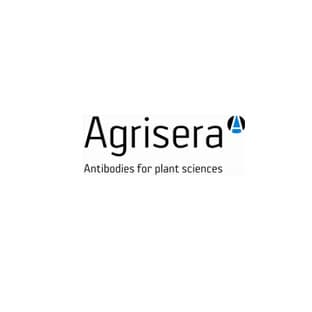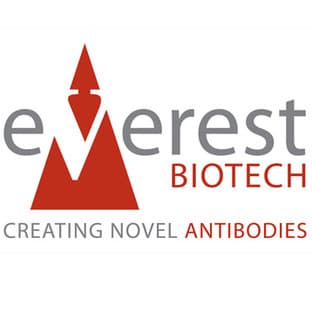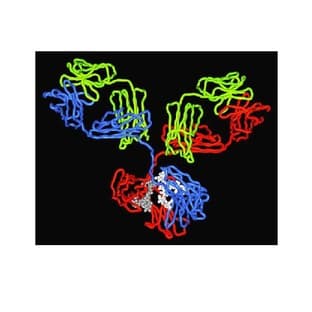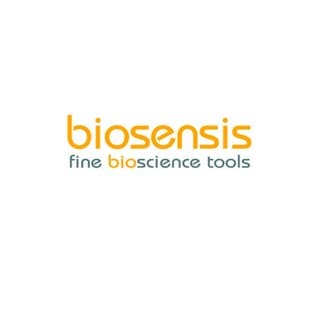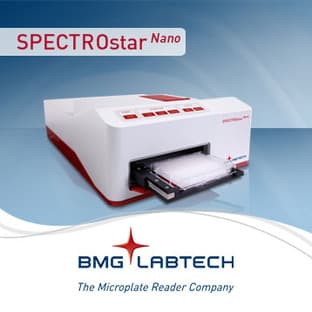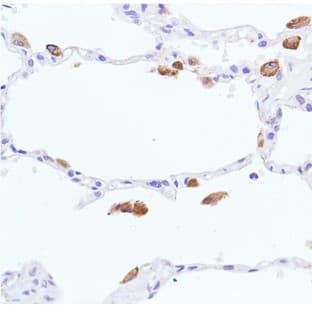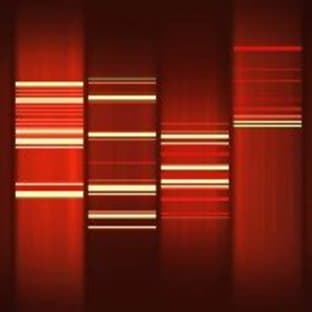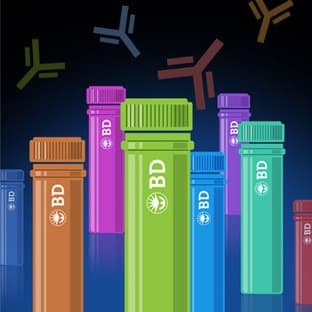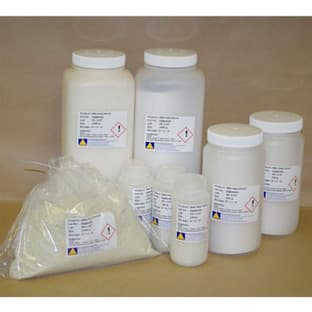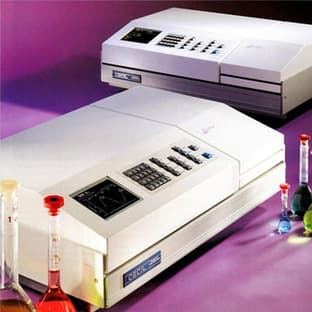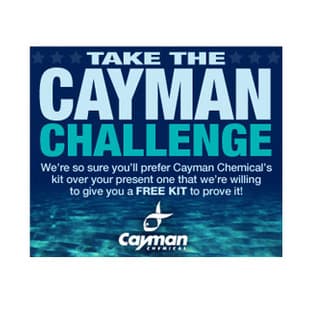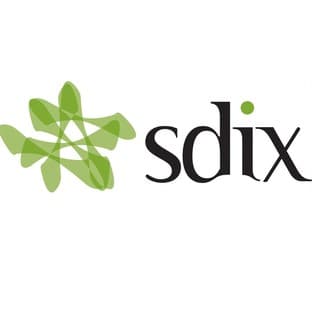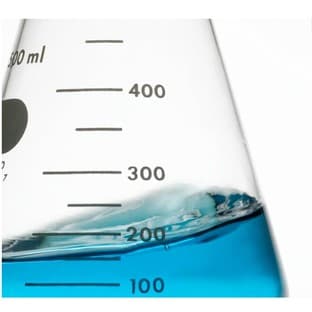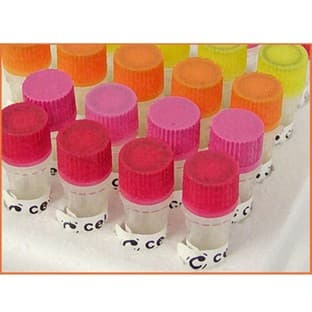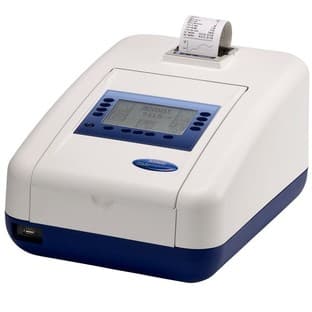
Supplier:
United States BiologicalCat no: S5369-95B
Sp1 Transcription Factor
Prices direct from United States Biological
Quick response times
Exclusive Biosave savings/discounts
SPECIFICATIONS
Catalog Number
S5369-95B
Size
100ug
Applications
IP, WB
Hosts
Rabbit
Reactivities
Hum
Form
Supplied as a liquid with TRIS-citrate/phosphate, pH 7.5, 0.09% sodium azide.
P Type
Pab
Purity
Purified by immunoaffinity chromatography.
Isotype
IgG
References
1. Ammendola, R., Mesuraca, M., Russo, T., and Cimino, F. (1992). Sp1 DNA binding efficiency is highly reduced in nuclear extracts from aged rat tissues. The Journal of Biological Chemistry 267: 17944-17948.2. Courey, A.J., Holtzmann, D.A., Jackson, S.P., and Tjian, R. (1989). Synergistic activation by the glutamine-rich domains of human transcription factor Sp1. Cell 59: 827-836.3. Courey, A.J., and Tjian, R. (1988). Analysis of Sp1 in vivo reveals multiple transcriptional domains, including a novel glutamine-rich activation motif. Cell 55: 8878-8898.4. Jackson, S.P., MacDonald, J.J., Lees-Miller, S., and Tjian, R. (1990). GC Box binding induces phosphorylation of Sp1 by a DNA-dependent protein kinase. Cell. 63: 155-165.5. Jackson, S.P., and Tjian, R. (1988). O-glycosylation of eukaryotic transcription factors: implications for mechanisms of transcriptional regulation. Cell. 55.6. Kadonaga, J.T., Carner, K.R., Masiarz, F.R., and Tjian, R. (1987). Isolation of cDNA encoding transcription factor Sp1 and functional analysis of the DNA binding domain. Cell 51: 1079-1090.7. Kingsley, C., and Winoto, A. (1992). Cloning of GT box-binding proteins: A novel Sp1 multigene family regulating T-cell receptor gene expression. Molecular and Cellular Biology 12: 4251-4261.8. Macleod, D., Charlton, J. Mullins, J., and Bird, A.P. (1994). Sp1 sites in the mouse aprt gene promoter are required to prevent methylation of the CpG island. Genes & Development 8: 2282-2292.9. Majello, B., De Luca, P., Hagen, G., Suske, G., and Lania, L. (1994). Different members of the Sp1 multigene family exert opposite transcriptional regulation of the long terminal repeat of HIV-1. Nucleic Acids Research 22: 4914-4921.10. Perkins, N.D., Lawrence Edwards, N., Duckett, C.S., Agranoff, A.B., Schmid, R.M., and Nabel, G.J. (1993). A co-operative interaction between NK-kB and Sp1 is required for HIV-1 enhancer activation. EMBO Journal 12: 3551-3558.11. Saffer, J., Jackson, S.P., and Thurston, S.J. (1990). SV40 stimulates expression of the trans-acting factor Sp1 at the mRNA level. Genes & Development 4: 659-666.12. Saffer, J.D., Jackson, S.P., and Annarella, M.B. (1991). Developmental expression of Sp1 in the mouse. Molecular and Cellular Biology 11: 2189-2199.
Additional Info
Recognizes human transcription factor Sp1.
SUPPLIER INFO
Applications
ELISA, WB
Hosts
Rabbit
Reactivities
Mouse
Latest promotions
Spend less time on DNA cleanup so you can do more science. The MSB Spin PCRapace is the fastest way to purify your DNA from PCR, restriction digestion, and...
New brilliant antibodies, and new lower prices!For flow cytometry reagents in general, \"bright is better.\" The violet-excitable BD Horizon™ BV421 and...
As an incentive to qualify our BSA, we are offering a 20% discount when you purchase your first 100g, 500g or 1000g of any grade of Bovine Serum Albumin....
It is not every day that you are given something for nothing. We are giving away additional spectrophotometer software.Cecil Instruments have enhanced the...
We're so sure that you'll prefer Cayman Assay kits over your present brand that we're willing to give you a free assay kit to prove it!
10% Discount on 2 Rabbit Polyclonal Antibody Service. With over 20 years experience, SDIX has developed into the premier US custom antibody producer,...
For the past decade scientists have extensively used ATS secondary toxin conjugates to make their own targeted toxins for in vitro use.The ability to combine...
Did your supplier increase the price of Fetal Bovine Serum? Did they substitute the US Origin with USDA? Well say no more! Innovative Research is still...
Bulk Cytokines with Custom Vialing.20 - 50% off cytokines, growth factors, chemokines and more...For a limited time Cell Sciences is offering substantial...
Jenway’s 73 series spectrophotometer range provides four models with a narrow spectral bandwidth of 5nm and an absorbance range of –0.3 to 2.5A,...
Are you planning to have a customised antibody made for your research?Since 2000, Everest has been producing a catalog containing thousands of affinity...
Top suppliers
United States Biological
230753 products
Carl Zeiss Microscopy
27 products
Promega Corporation
11 products
Panasonic Healthcare Company
5 products
Life Technologies
1 products
Nikon Instruments Europe
11 products
Olympus Europa Holding GmbH
3 products
Leica Microsystems, Inc.
10 products
GE Healthcare Life Sciences
2 products
Tecan Trading AG
19 products
Beckman Coulter, Inc.
1 products
AB SCIEX
3 products
BD (Becton, Dickinson and Company)
1 products
RANDOX TOXICOLOGY
5 products
Randox Food Diagnostics
6 products
